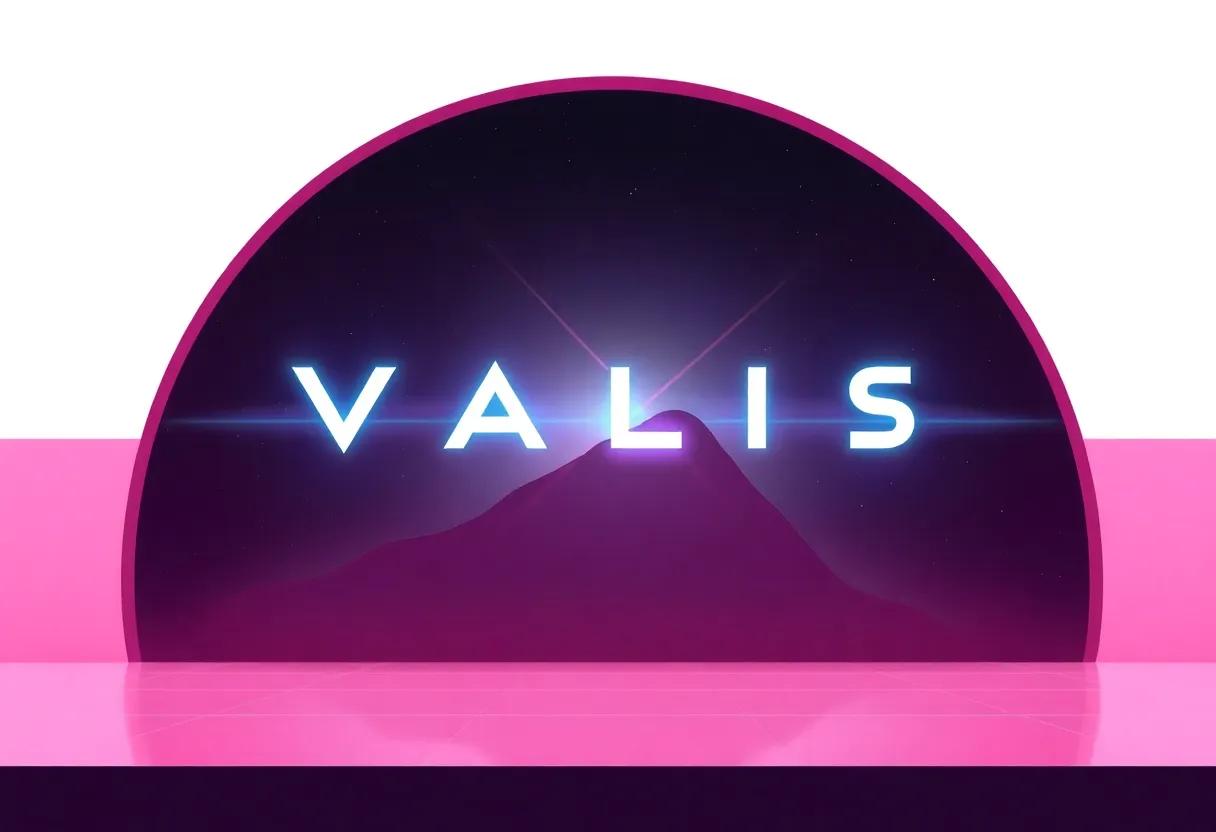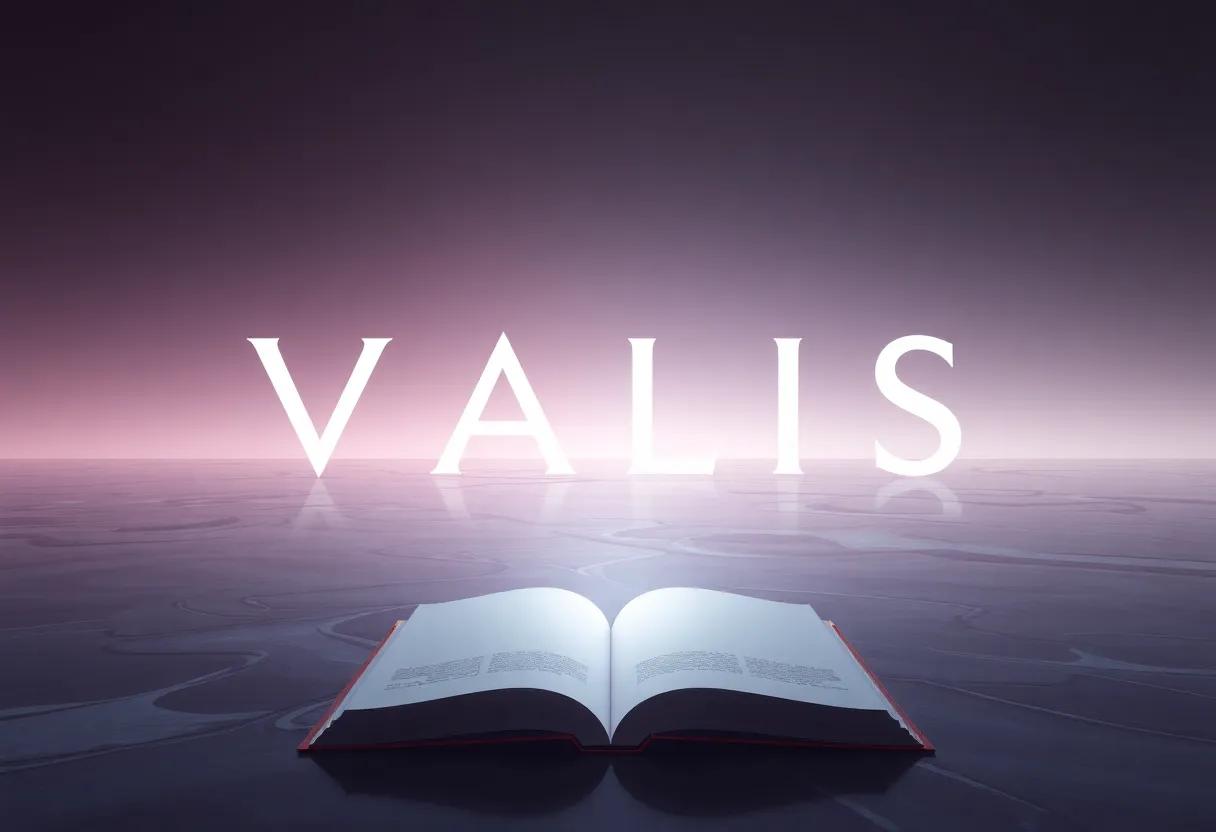In the labyrinthine corridors of Philip K. Dick’s imagination,where reality frequently enough blurs with visions of the divine,VALIS stands as a beacon of both mystery adn revelation. This novel does not merely narrate a story; it invites readers to traverse the fragile boundary between the known and the transcendent, challenging perceptions of existence, faith, and madness. In this review, we delve into the intricate layers of VALIS, exploring how Dick’s unflinching gaze and philosophical probing create a work that is as perplexing as it is indeed profound-an enduring exploration of reality and divinity that continues to captivate and confound.
exploring the Thin Veil Between Reality and Illusion in Philip K. Dick’s VALIS and Its Impact on Perception

Philip K. Dick’s VALIS masterfully blurs the line between what is tangible and what is perceived, creating a narrative landscape where reality seems as fragile as the characters’ grasp on it.within this intricate weave, readers encounter a labyrinth of signs, symbols, and divine whispers that question the very nature of existence. It’s not merely a question of what is real but how reality is constructed-whether through divine intervention, mental fragmentation, or collective consciousness. The novel’s melding of science fiction with mystical inquiry invites us to confront unsettling possibilities: that our perceptions might be nothing more than an elaborate illusion, and that the ”truth” is lying just beyond the veil, teasing and tantalizing in its elusiveness.
The impact on the reader’s perception is profound and multi-layered. VALIS challenges conventional narrative expectations,employing fragmented storytelling and unreliable memories to echo the instability of its themes. This creates a unique reading experience where the boundaries between subject and object, observer and observed, start to dissolve. Consider the key elements that destabilize reality within the novel:
- Synchronicities and coincidences: Events that seem orchestrated by an unseen intelligence.
- Split identities: Characters embody multiple personas, blurring personal and spiritual realities.
- technological mysticism: The intersection of ancient prophecy with futuristic technology.
| Element | Effect on Perception |
|---|---|
| Fiction within fiction | Creates layered realities, making truth porous |
| divine visions | Blend mysticism with mental disturbance |
| Paranoia | Evokes existential uncertainty and mistrust |
Unraveling the Spiritual and Philosophical layers Embedded Within the Complex Narrative of VALIS

At the core of VALIS lies a labyrinthine exploration of consciousness,divinity,and the elusive nature of reality itself.Philip K. Dick layers his narrative with intricate metaphysical questions, challenging readers to reconsider conventional distinctions between the sacred and the profane. The novel navigates through themes such as gnosticism, existential paranoia, and the fragmented self, presenting a universe where divine revelation intertwines with human madness. Dick’s personal experiences, infused within the plot, add an autobiographical depth that blurs the line between fiction and spiritual autobiography, creating a multi-dimensional tapestry that resonates on both intellectual and emotional levels.
Within this complex framework, several recurring concepts demand attention:
- VALIS as a Symbol: More than a mere entity, VALIS represents a cosmic intelligence or a metaphysical transmitter challenging the protagonist’s perception of reality.
- Dualism and Fragmentation: The tension between a fractured reality and an underlying absolute questions the integrity of human knowledge and belief.
- Divine Intervention vs. Human Interpretation: The blurred interaction highlights the subjectivity of spiritual experience, emphasizing how interpretation shapes reality.
| philosophical Themes | Description |
|---|---|
| Gnosticism | Knowledge as salvation and the material world as illusion |
| Epistemology | Questioning the nature and limits of human knowledge |
| Ontology | The study of being and existence through layered realities |
This intricate layering not only serves as a vehicle for speculative fiction but also invites readers into a profound spiritual inquiry. The text’s complexity mirrors the frequently enough disorienting pursuit of enlightenment itself, where answers remain obscured and the search is perpetual. In this way, VALIS transcends its narrative origins, becoming a meditation on the fragility and grandeur of human understanding in the face of the divine unknown.
Analyzing the Role of Gnosticism and Theology in Shaping the Book’s Unique Vision of Divinity

Philip K. Dick’s VALIS navigates the labyrinth of divinity through the intertwined lenses of Gnosticism and traditional theology.This fusion crafts a reality where the divine is simultaneously a liberating force and a fragmented enigma. The narrative echoes the Gnostic notion of a hidden, transcendent truth beyond the material world-a truth accessible only through revelation and gnosis. Yet, unlike orthodox theology’s often hierarchical view of God, Dick’s divinity oscillates between a chaotic cosmic force and a loving, albeit inscrutable, presence. This duality challenges readers to reconsider their preconceptions about omnipotence and evil, suggesting that divinity might be less a monolithic entity and more a spectrum of paradoxical experiences waiting to be deciphered.
The theological undertones also manifest through the novel’s symbolic motifs and philosophical inquiries, which invite contemplation on the nature of salvation, suffering, and knowledge. Key themes include:
- The Demiurge and False Reality: Reflecting Gnostic cosmology, the material world is portrayed as flawed, orchestrated by an ignorant or malevolent creator.
- Revelation as Liberation: Divine knowledge breaks the chains of illusion, echoing the Gnostic pursuit of spiritual awakening.
- Messianic Figures: Characters act as imperfect messengers or vessels, complicating traditional notions of prophecy and divinity.
| Concept | Gnostic Interpretation | Theological Contrast |
|---|---|---|
| Divine Knowledge | Esoteric, hidden, transformative | Revealed through scripture, faith-based |
| Creation | Material world as flawed, derivative | World created benevolently by God |
| Salvation | Awakening from ignorance (gnosis) | Grace and redemption through Christ |
In blending these elements, Dick formulates a vision of divinity that is both profoundly fractured and deeply intimate. His approach dissolves the boundary between mystical experience and philosophical theology, producing a tapestry where spiritual inquiry and metaphysical speculation feed into one another, crafting a unique emblem of divine mystery.
Character Studies: The Intriguing Ambiguity of Protagonists Grappling with Epiphany and Madness

Within the labyrinth of VALIS, protagonists are cast into a shadowy corridor where the line between awakening and unraveling blurs. Their journeys pulse with a captivating tension: are their revelations genuine glimpses of divine truth, or manifestations of a fracturing mind? This ambiguity challenges readers to question the reliability of perception itself. The characters’ internal struggles are not just psychological puzzles but metaphysical inquiries, embodying the duality of human experience – the yearning for transcendence entangled with the descent into chaos.
As these figures teeter on the precipice where epiphany and madness intertwine, their stories unfold in layers of complexity, much like an intricate mosaic. Consider the essential themes at play:
- Perception vs. Reality: A core motif that destabilizes fixed narratives.
- Divine Contact or Disorder: Exploration of whether spiritual experiences are genuine or symptomatic.
- Identity and Fragmentation: The shifting self as a mirror of cosmic uncertainty.
| Character | Epiphany | Madness |
|---|---|---|
| Horselover fat | Encounters with VALIS | Paranoia & hallucinations |
| Philip | Search for cosmic meaning | Identity dissolution |
| Sophia | Spiritual insights | Emotional breakdowns |
Narrative Structure and Style: How VALIS Challenges Conventional Storytelling and Engages the reader

philip K. Dick’s VALIS abandons traditional linear narratives in favor of a layered, almost kaleidoscopic storytelling approach that mirrors the fragmented nature of reality and perception it seeks to explore. The novel interweaves autobiographical elements, philosophical discourse, and sci-fi motifs, blurring the lines between fiction and reality. This collage-like structure challenges readers to actively piece together disparate threads,resulting in a deeply immersive experience. Rather than offering straightforward answers, the narrative style invites interpretation, urging readers to question the reliability of memory, the nature of consciousness, and the existence of higher powers.
The novel’s stylistic choices are equally provocative. Dick employs metafictional commentary-where characters reflect on their own stories-and integrates fictional documents, sermon excerpts, and cryptic dialogues that evoke religious and mystical symbolism. This technique enhances the thematic depth by creating multiplicity in voices and perspectives. Consider the following snapshot of how these diverse narrative elements coalesce:
| Element | Function | Effect on Reader |
|---|---|---|
| Diary Entries | Personal reflections | Creates intimacy and authenticity |
| Philosophical Dialogues | Thematic exploration | Stimulates critical thought |
| Religious Sermons | Spiritual context | Invokes mysticism and awe |
By weaving these layers together, VALIS forges an interactive reading journey where engagement arises not from passive consumption but from intellectual and emotional participation. Readers find themselves both observers and co-creators of meaning, navigating the chaotic intersections of reality, divinity, and madness with a narrative style that defies convention yet remains profoundly compelling.
the Influence of Philip K. Dick’s Personal Experiences on the Themes and Tone of VALIS
Philip K.Dick’s tumultuous journey through mental health struggles, substance use, and spiritual awakenings significantly colors the intricate narrative of VALIS. His encounters with visions, paranoia, and a profound search for meaning inject a palpable authenticity into the novel’s exploration of divinity and fractured reality. These personal experiences don’t merely serve as background context; instead, they form the very fabric of the story’s themes, helping readers to navigate a world where the lines between the sacred and the schizophrenic blur. This merging of lived experience with fiction crafts a tone that oscillates between introspective dread and transcendent revelation, challenging perceptions of sanity and cosmic order.
- visions as Narrative Motor: Dick’s reported mystical experiences energize the novel’s depiction of a metaphysical encounter with the VALIS entity.
- Fragmented Reality: Personal struggles with mental illness manifest in the disjointed, often surreal storytelling style.
- Spiritual Skepticism: The tension between skepticism and faith permeates the characters’ quests, mirroring Dick’s own philosophical conflicts.
| Personal Experience | Thematic Reflection | Tonal Impact |
|---|---|---|
| Mystical visions (1974 experiences) | Divine intervention and hidden realities | Enigmatic and haunting |
| Paranoia and mental health struggles | Reality’s instability and distrust | Unsettling and fragmented |
| Psychedelic substance use | Altered perception and expanded consciousness | Surreal and introspective |
Technological Dystopia Meets Mysticism: Assessing the fusion of Science Fiction and Spiritual Inquiry
Philip K. Dick’s *VALIS* ventures boldly into a realm where advanced technology doesn’t just dictate societal trends but intertwines with the ethereal and spiritual. The novel challenges the conventional boundaries between mechanistic science and transcendent experience, compelling readers to question the fabric of reality itself. The fictional world Dick constructs is rife with paradoxes-a blend of cybernetic omnipresence and mystical epiphanies-where artificial intelligence and divine intervention coexist in a symbiotic dance. Here, the reader contemplates how societal control through technology may simultaneously inhibit and facilitate spiritual awakening, an idea that reverberates profoundly in our contemporary digital age.
The novel’s approach can be distilled into three core thematic lenses that illuminate the fusion of science fiction and spirituality:
- Epistemological Uncertainty: Reality’s fluidity challenges epistemic certainty through technological visions and gnosis.
- Post-Human Mysticism: The emergence of post-human entities blurring distinctions between the corporeal and the divine.
- Symbolic Cybernetics: Dialogue technologies mirrored as conduits for transcendental messages.
| Aspect | Science Fiction Element | Spiritual Inquiry |
|---|---|---|
| Vision | Synthetic consciousness | Prophetic revelation |
| Communication | Data transmission networks | Divine inspiration |
| Identity | Fragmented cyborg self | Soul multiplicity |
Comparative Insights: VALIS in the Context of Philip K. Dick’s Broader Literary Canon
Within Philip K.Dick’s extensive oeuvre, VALIS occupies a uniquely introspective space where the boundaries between metaphysics and madness blur more vividly than in his other works. While his narratives often explore themes of reality distortion and authoritarian control, VALIS transcends mere speculative fiction by delving into the personal and spiritual upheavals that shaped Dick’s own life. Unlike the dystopian dystopias of Do Androids Dream of Electric Sheep? or the paranoia-steeped landscapes of A Scanner Darkly, VALIS confronts divinity as an experiential phenomenon-one tinged with cosmic revelation and epistemological doubt. This intimate approach invites readers to confront not just external manipulations of reality but also the subjective complexities of faith, identity, and the search for truth.
The novel’s position can be further illuminated by comparing core thematic elements across some of Dick’s seminal texts:
- Reality and Perception: All his works wrestle with constructed realities, but VALIS uniquely integrates this struggle into a spiritual quest.
- Existential Questions: Questions about what it means to be human permeate his stories, yet in VALIS, they intersect with divine intervention and Gnostic philosophy.
- Psychological Fragmentation: while fragmented identities appear in novels like Ubik, VALIS presents fragmentation as a direct symptom of metaphysical revelation.
| Aspect | VALIS | Other Works |
|---|---|---|
| Reality Framework | Gnostic, mystical overlay | Science fiction dystopia |
| Central Conflict | Divine revelation vs. mental instability | Man vs. society or technology |
| Narrative Tone | philosophical, reflective | Thrilling, suspenseful |
This comparative lens highlights how VALIS serves as both a culmination and an outlier in Dick’s literary journey, blending the speculative frameworks he’s known for with a profound spiritual inquiry rarely seen elsewhere in the genre.
Recommendations for Readers Seeking Philosophical Depth in Science Fiction and Speculative Literature
For those who crave philosophical inquiries entwined with speculative storytelling, delving into works like VALIS offers a profound gateway. Philip K. Dick masterfully blurs the lines between metaphysics and reality, challenging readers to question the nature of existence and the divine. To deepen this exploration, consider authors who similarly weave complex ideas into their narratives, such as Stanisław Lem’s contemplative probes into consciousness or Ursula K. Le Guin’s nuanced examinations of morality and society. these voices, rich with layered meaning, invite readers to traverse not just imaginative landscapes but also the recesses of their own beliefs and understanding.
Curated Recommendations for Philosophical Engagement:
- Solaris by Stanisław Lem – explores human psychology confronted by the unknowable.
- The Dispossessed by Ursula K. le Guin - a nuanced critique of utopia and freedom.
- Ubik by Philip K. Dick – another layered exploration of reality’s fragility.
- Blindsight by peter Watts – challenges perception, consciousness, and identity.
| Author | Notable Work | Philosophical Theme |
|---|---|---|
| Philip K. Dick | VALIS | Divinity, Reality, Paranoia |
| Stanisław Lem | Solaris | consciousness, the Unknown |
| Ursula K. Le Guin | The Dispossessed | utopia, Ethics |
| Peter Watts | Blindsight | Identity, Perception |
VALIS as a Catalyst for Discussions on Consciousness, Reality, and the Nature of Existence
Philip K. Dick’s VALIS serves as more than just a science fiction narrative-it acts as a profound springboard for exploring the intricate realms of consciousness and reality. Through the protagonist’s fragmented perceptions and encounters with a seemingly omnipotent intelligence, readers are invited to question the fabric of their own existence. This novel blurs the lines between sanity and madness, subjective and objective truths, encouraging rich debates about what it truly means to *know* anything. The interplay between divine intervention and human interpretation calls attention to the limits of perception and the possibility of hidden layers of reality waiting to be uncovered.
Engaging with the ideas in VALIS reveals a tapestry where philosophical inquiry and speculative fiction intertwine. consider the following themes that emerge as catalysts for deep reflection:
- Epistemological Uncertainty: How do flawed perceptions shape our understanding of existence?
- Divine Presence: What is the nature of god-or gods-in a universe that defies easy description?
- Existential Identity: Can the self survive when reality itself is mutable or artificial?
| Concept | Interpretation | Implication |
|---|---|---|
| VALIS (Vast Active Living Intelligence System) | Cosmic Mind or Divinely Engineered Reality | Challenges human-centric perspectives on consciousness |
| Gnostic Vision | Hidden knowledge transcending material world | Encourages skepticism towards accepted truths |
| Paranoia and Revelation | perceived madness vs actual enlightenment | Questions reliability of mental frameworks |
This evocative layering of ideas makes VALIS an enduring touchstone for readers and thinkers yearning to delve beyond the surface of existence. It prompts continuous dialogue about whether reality is a fixed domain or an evolving construct shaped by consciousness itself.
Visualizing VALIS: Suggestions for AI-Generated imagery to Capture Its Surreal and Metaphysical Essence
To truly evoke the labyrinthine nature of VALIS through AI-generated imagery, consider blending surreal, dreamlike landscapes with elements of cosmic mysticism. Imagine a sky fractured like stained glass, where shards of light form cryptic symbols, hovering above an otherworldly desert strewn with ancient technological debris. Intertwining ethereal textures-such as wisps of vaporized electrons or fractal patterns resembling neural networks-can suggest the fusion of divinity and synthetic intelligence that permeates the novel.
- Translucent overlays: Ghostly faces or eyes embedded within celestial bodies to symbolize hidden consciousness.
- Collaged timelines: Fading human figures dissolving into binary codes or archaic script highlighted with glowing accents.
- abstract religious iconography: Crosses or halos reconstructed from interlocking circuit board components.
| Visual Element | Suggested AI Style | Symbolic Meaning |
|---|---|---|
| Fractured sky | Surreal abstract | Fragmented reality |
| Ancient Tech Ruins | Post-apocalyptic | Lost divinity |
| Neural Fractals | Algorithmic generation | Connected consciousness |
| Symbolic Halos | Digital iconography | blurring sacred and synthetic |
Reflections on the Enduring Legacy of Philip K. Dick as a Visionary Writer and Cultural Commentator
Philip K. Dick’s work continues to resonate through the corridors of speculative fiction and wider cultural discourse, largely as he confronts the fragile boundaries between perception and reality with unwavering boldness. His narratives often weave intricate tapestries where the spiritual and the technological collide,inviting readers to question not only what is real but also what it means to be human amid the flux of societal and metaphysical flux.Through the prism of VALIS, Dick articulates a form of divine chaos-a vision where revelation and madness are unnervingly entwined. This fusion challenges traditional notions of divinity, offering instead a nuanced critique that reverberates in contemporary explorations of consciousness, identity, and power.
Central to Dick’s enduring legacy is his capacity to serve as both prophet and skeptic, a position that fuels his cultural commentary with rare depth. His storytelling offers:
- A prophetic lens on the implications of technology infiltrating everyday life
- A meditation on the fragility and malleability of human identity
- A subtle interrogation of institutional authority and control
- An exploration of mystical experience through a psychedelic and philosophical filter
These elements not only enrich his narratives but also make his work a fertile ground for ongoing philosophical debate and artistic inspiration, solidifying his place as a visionary who transcended the boundaries of his era.
| Theme | Manifestation in VALIS |
|---|---|
| Reality vs. Illusion | Fragmented perceptions blur distinctions |
| Divine Intervention | An enigmatic vision as catalyst |
| Human Consciousness | Explored through paranoia and revelation |
| Social Control | Critiqued via dystopian undertones |
In the final reckoning, invites readers to navigate the labyrinthine corridors of perception,belief,and existence that Dick so masterfully constructs. This review doesn’t just dissect the novel’s complex narrative; it opens a window into the broader questions VALIS poses-about the nature of reality, the presence of the divine, and the fragile line between madness and enlightenment. Whether approached as a sci-fi enigma or a profound philosophical journey, the reflection offered here encourages us to ponder the mysteries that lie beyond the page-and perhaps beyond our own understanding.











